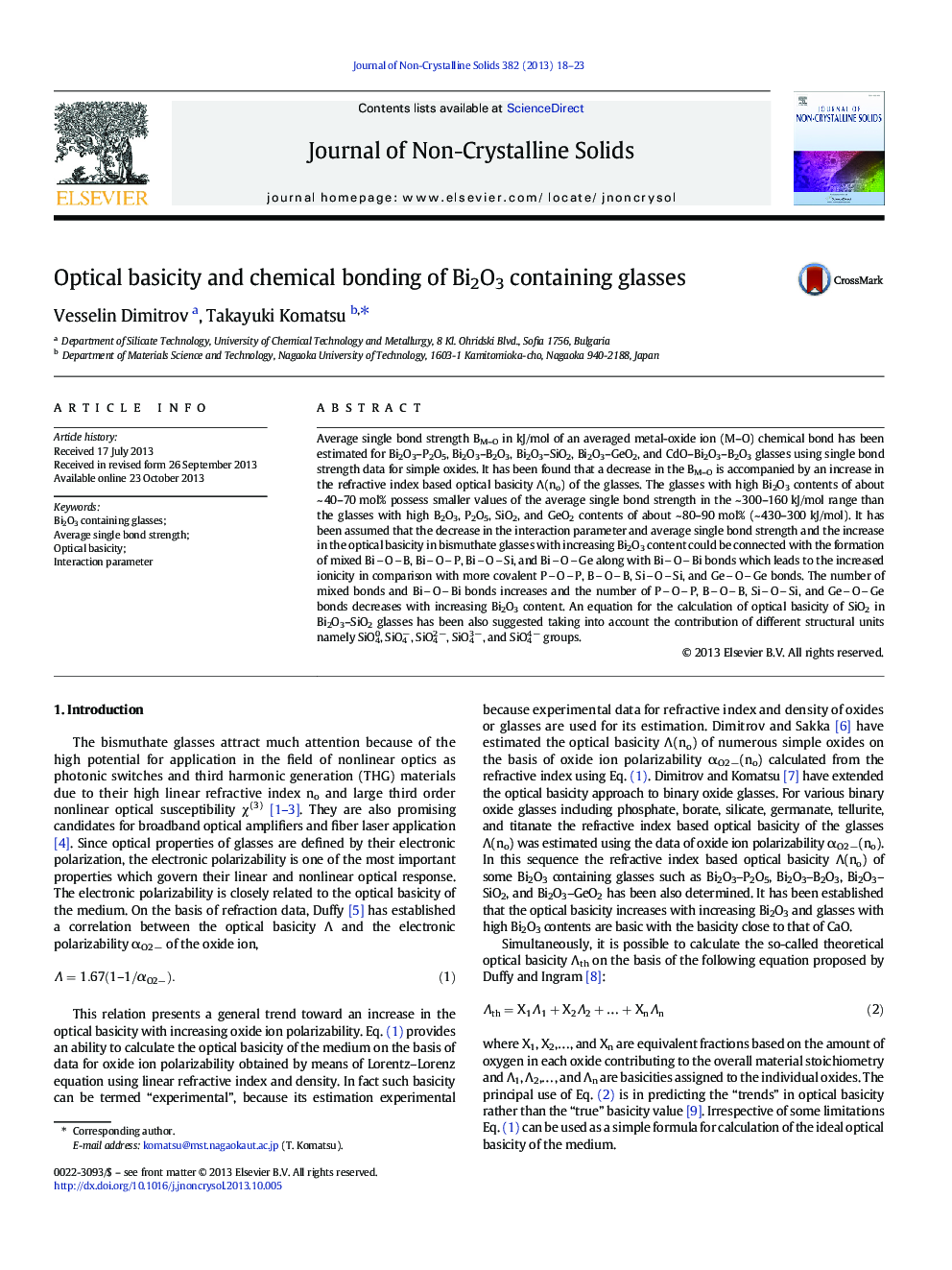| کد مقاله | کد نشریه | سال انتشار | مقاله انگلیسی | نسخه تمام متن |
|---|---|---|---|---|
| 1481096 | 1510456 | 2013 | 6 صفحه PDF | دانلود رایگان |

• Average single bond strength BM–O for Bi2O3 containing glasses is estimated.
• Glasses with high Bi2O3 contents of 40–70 mol% possess smaller BM–O values.
• Decrease in BM–O is connected with the formation of BiOB along with BiOBi bonds.
• Good correlations are found between interaction parameter, optical basicity, and BM–O.
Average single bond strength BM–O in kJ/mol of an averaged metal-oxide ion (M–O) chemical bond has been estimated for Bi2O3–P2O5, Bi2O3–B2O3, Bi2O3–SiO2, Bi2O3–GeO2, and CdO–Bi2O3–B2O3 glasses using single bond strength data for simple oxides. It has been found that a decrease in the BM–O is accompanied by an increase in the refractive index based optical basicity Λ(no) of the glasses. The glasses with high Bi2O3 contents of about ~ 40–70 mol% possess smaller values of the average single bond strength in the ~ 300–160 kJ/mol range than the glasses with high B2O3, P2O5, SiO2, and GeO2 contents of about ~ 80–90 mol% (~ 430–300 kJ/mol). It has been assumed that the decrease in the interaction parameter and average single bond strength and the increase in the optical basicity in bismuthate glasses with increasing Bi2O3 content could be connected with the formation of mixed BiOB, BiOP, BiOSi, and BiOGe along with BiOBi bonds which leads to the increased ionicity in comparison with more covalent POP, BOB, SiOSi, and GeOGe bonds. The number of mixed bonds and BiOBi bonds increases and the number of POP, BOB, SiOSi, and GeOGe bonds decreases with increasing Bi2O3 content. An equation for the calculation of optical basicity of SiO2 in Bi2O3–SiO2 glasses has been also suggested taking into account the contribution of different structural units namely SiO40, SiO4−, SiO42 −, SiO43 −, and SiO44 − groups.
Journal: Journal of Non-Crystalline Solids - Volume 382, 15 December 2013, Pages 18–23